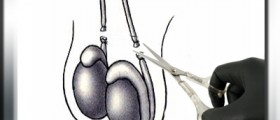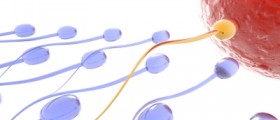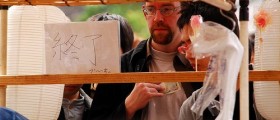
There is no way to detect obstructive azoospermia without a medical examination. The semen will look normal and will probably be produced in normal volume. The only way to diagnose this common cause of male infertility is with a sperm count. In rare instances, men are born without the vas deferens, the canal that conducts sperm out of the testes into the prostate to be mixed with semen. A much more common cause of obstructive azoospermia is vasectomy. Of course, creating an obstruction that will ensure azoospermia and prevent conception is the whole purpose of the operation. For these men, the vasectomy has to be reversed for conception to occur, unless the men undergo "tapping" the testes for sperm with a needle.
The second most common cause of obstructive azoospermia is sexually transmitted disease, in particular, chlamydia. Many men contract chlamydia and experience no symptoms, but the infection causes inflammation and destruction of the seminiferous tubules that conducted mature sperm out of the testes into the vas deferens, which conducts them forward to the prostate to be mixed with semen. The most common cause of obstructive azoospermia, however, is a condition known as varicocele. This is a dilation of swelling of the blood vessels surrounding the spermatic cord, which carries sperm away from their site of production. Varicocele is often referred to as a "nutcracker." The vein on the left side of the testicles is longer than the vein on the right. Pressure builds up on the left side of the testicles and stops circulation. Alternatively, the left renal vein, carrying blood away from the left kidney back in the direction of the heart, can be stressed. The renal vein puts pressure on the left vein over the testicles. Or the valves in the left vein may simply get stuck.
Varicocele stops the circulation that cools the testicles and makes the production of sperm possible. It causes blood to stagnate around the testicles. Hormonal signals never reach their intended targets. A vascular problem affecting one testicle can also affect the other testicle. Unlike other kinds of obstructive azoospermia, varicocele is not necessarily an "all or nothing" phenomenon. The sperm count may be only reduced, not eliminated, but the creation of sperm without providing them with enough oxygen and nutrients may result in malformed sperm or sperm with swimming ability.
- www.nhs.uk/conditions/infertility/treatment/
- www.nhs.uk/conditions/infertility/causes/
- Photo courtesy of Bobjgalindo by Wikimedia Commons: en.wikipedia.org/wiki/Azoospermia#/media/File:Semen_analysis.JPG

















Your thoughts on this
Loading...